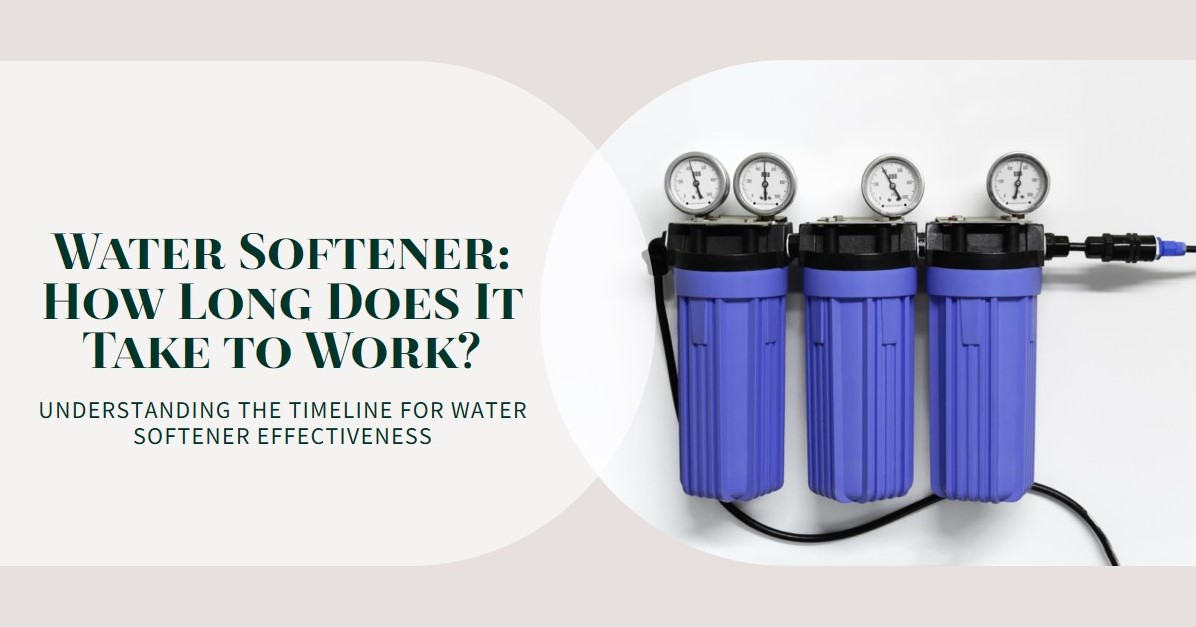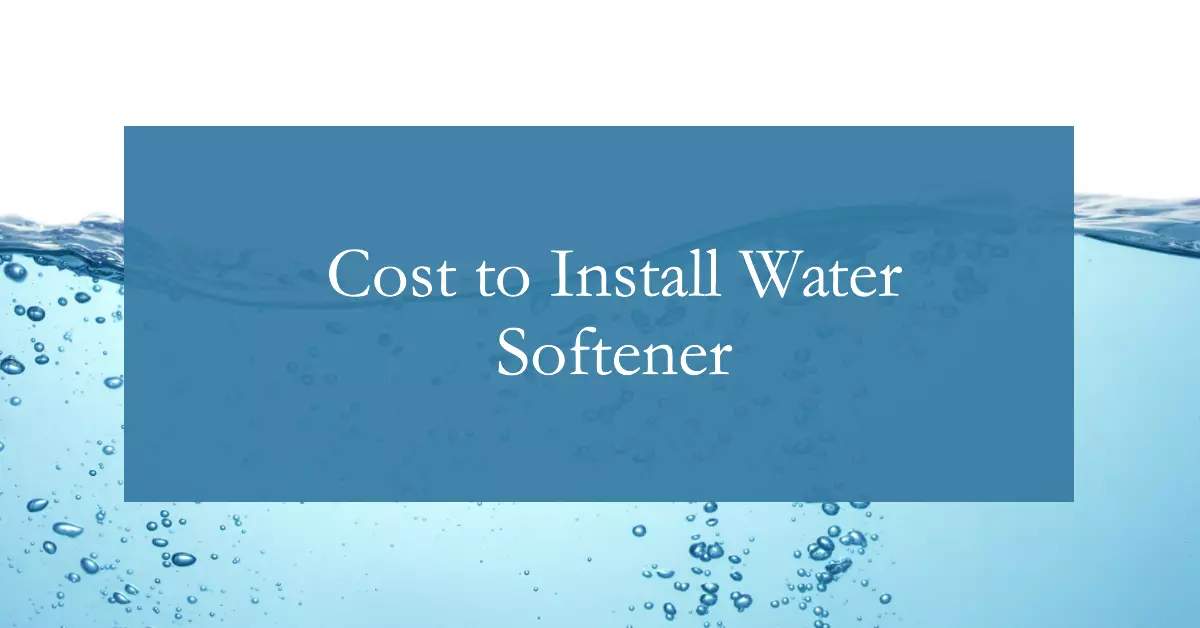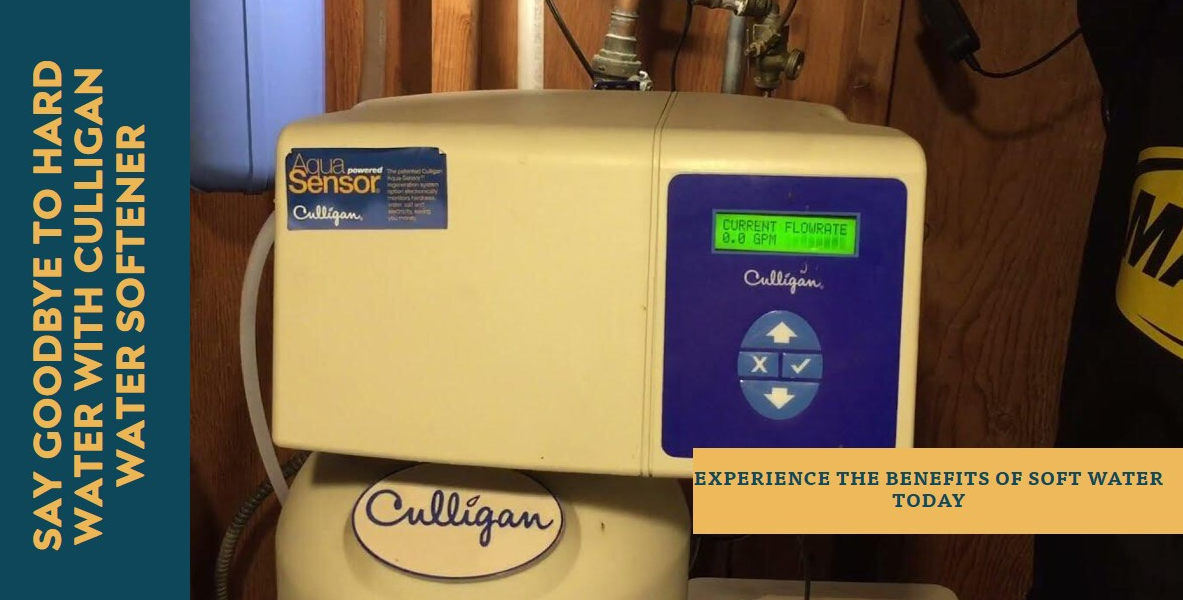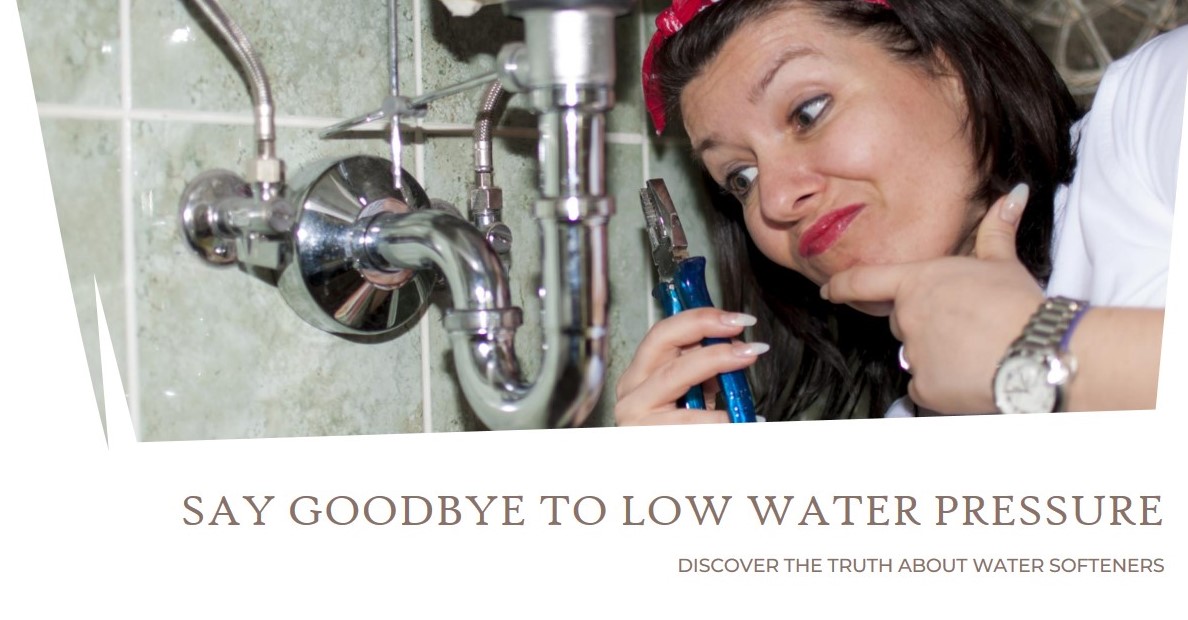If you have recently installed a water softener in your home, you may be wondering – how long does it take for a water softener to work? The answer depends on several factors.
How Water Softeners Work
To understand how long it takes for a water softener to work, it helps to first understand what a water softener does and how it works.
A water softener is a whole-house filtration system that removes minerals like calcium and magnesium from hard water. The most common type of water softener uses a process called ion exchange to soften water.
Here is a quick overview of how an ion exchange water softener works:
- Hard water enters the softener and flows through a resin bed made up of small plastic beads called zeolite.
- The zeolite beads have a negative charge, which attracts and binds to the positively charged calcium and magnesium ions in the hard water. This ion exchange process removes the mineral ions that cause hardness.
- After flowing through the resin bed, the softened water exits the softener system and flows throughout your home’s plumbing.
- Over time, the zeolite beads become saturated with calcium and magnesium ions and lose their softening capacity.
- The softener goes through a regeneration cycle to flush the mineral ions from the resin bed and recharge the zeolite beads with sodium or potassium ions.
- Regeneration allows the softener to continue removing hardness minerals from your water.
Factors That Affect How Long It Takes a Water Softener to Work
With a basic understanding of how water softeners work, let’s look at some of the key factors that affect how long it takes for a softener to begin softening your household water:
Type of Water Softener
There are a few different types of water softeners, including:
- Ion exchange – The most common type, uses zeolite resin beads to remove hardness minerals through ion exchange. Takes about 1-2 hours to begin softening water.
- Salt-free – Uses a physical filter media like ceramic balls to trap hardness minerals. Can take 12-24 hours to reach full softening capacity.
- Magnetic or electromagnetic – Claims to alter the structure of minerals to prevent limescale; effectiveness is debated. May take days to show any softening effects.
Ion exchange softeners are fastest, taking only 1-2 hours to start working, while salt-free and magnetic models often take longer.
Hardness Level of Your Water
The hardness level of your water significantly impacts how long it takes a softener to work. Hardness levels are measured in grains per gallon (gpg) or milligrams per liter (mg/L).
- Soft water: Less than 1 gpg (17 mg/L)
- Slightly hard: 1-3.5 gpg (17-60 mg/L)
- Moderately hard: 3.5-7 gpg (60-120 mg/L)
- Hard: 7-10 gpg (120-180 mg/L)
- Very hard: Over 10 gpg (Over 180 mg/L)
If you have very hard water with a high level of calcium and magnesium ions, it will take longer for a softener to remove enough of these minerals to soften the water. For very hard water, a softener may take 6-12 hours to reach full capacity.
Water Usage in the Home
The amount of water used in the household also affects how quickly the softener can work. In a large home with higher water demands, the softener will have to regenerate and restore capacity more frequently. With consistent water usage, an appropriately-sized softener should still soften within 1-2 hours.
However, in a smaller home that uses less water, the softener doesn’t have to regenerate as often. This means it will reach full softening capacity faster, often within 1 hour or less.
Size of the Water Softener
Larger softener units that can hold more resin beads and treat higher water volumes will typically work faster than smaller units. Make sure to size your softener properly for your household size and water usage. An undersized unit may take longer to keep up with water demands.
The Softening Process Timeline
Now that we’ve reviewed the factors that affect water softener working speed, let’s look at a general timeline for how long it takes for an ion exchange water softener to fully soften household water:
- 5-10 minutes – The softener begins the ion exchange process as soon as hard water enters the resin tank. You may notice a slight improvement in water quality.
- 30-45 minutes – About halfway through the resin bed, significant mineral ion removal has occurred. Water is moderately softened.
- 1 hour – Water has flowed through the entire resin bed and is exiting the softener fully softened.
- 1-2 hours – The softener has had enough time to completely flush the internal plumbing and household water lines of hard water. All water from faucets and appliances is now soft.
However, this timeline can vary based on the influencing factors discussed above. It may take a salt-free or electromagnetic softener 6-12 hours to reach the same level of water softening as an ion exchange unit does in 1-2 hours. Hardness level and water usage also impact results.
Keep in mind that the softener will need to regenerate and restore resin capacity periodically, which interrupts the softening process for 1-2 hours while the unit goes through a cleaning cycle.
When Do You Notice Softer Water?
Many homeowners want to know when they will start noticing the benefits of softened water after installing their new system. Here’s what you can expect:
- You may begin to notice a slight improvement in lathering of soaps and detergents within 30-60 minutes after the softener starts up. This indicates some hardness removal.
- Within 1-2 hours, you will probably see fuller lathering, cleaner rinse, and softer feel to your water when bathing or washing dishes.
- Laundry washed in softened water may feel softer and fresher within the first 1-2 loads.
- Scale buildup in pipes, faucets, and appliances will gradually begin improving after several days of soft water. Existing scale takes longer to remove.
- Hair and skin will start feeling smoother and softer after showering in softened water for about a week.
- Over time, softened water should provide laundry, dishwashing, plumbing, and personal care benefits. It may take weeks or months to see the full effects on scale reduction.
Be patient – while you should notice some initial improvements rather quickly, the full benefits of softened water come with consistent use over time. The longer your system has been working to soften all your household water, the better results you will see.
Tips for an Effective Water Softener
To get the most efficient results from your new water softener, keep these tips in mind:
- Backwash regularly – Backwashing cleans the resin bed and flushes away trapped minerals. Backwash once every 1-2 weeks.
- Add salt – Check the brine tank salt levels every 2-4 weeks and replenish as needed to keep sodium levels high for ion exchange.
- Adjust salt dose – For very hard water, increase the salt dose to remove more hardness minerals faster.
- Use cleaner – Periodically clean the resin bed with a resin bed cleaner to prevent buildup.
- Service annually – Have a professional service and inspect your softener once a year to keep it working properly.
- Upgrade if needed – If you have very hard water or a large household, upgrade to a larger softener with more resin capacity.
Following these best practices will help ensure your softener provides fully softened water as quickly and efficiently as possible.
Troubleshooting Problems Preventing Soft Water
In some cases, a new water softener that seems to be running correctly may not fully soften your water as quickly as expected. Here are a few possible reasons and solutions:
Problem: Bypass valve left partially closed
Solution: Fully open the bypass valve so all water flows through the softener.
Problem: Clogged resin tank inlet
Solution: Clean the inlet strainer screen of debris blocking water flow.
Problem: Power outage
Solution: Reset the system and confirm it completed a full regeneration cycle after power was restored.
Problem: Insufficient backwashing
Solution: Manually initiate a thorough backwash cycle to clean the resin bed.
Problem: Salt bridge in brine tank
Solution: Break up the salt bridge to allow brine to dissolve fully for regeneration.
Problem: Softener undersized
Solution: Upgrade to a larger softener to handle water demands.
Addressing any installation or maintenance issues will help optimize your softener’s performance. Contact the manufacturer or installer for troubleshooting help.
Final Thoughts
Installing a water softener is a great solution for removing hardness minerals from your household water. While it may take a bit of time for you to notice softer skin, cleaner dishes, and fewer spots on fixtures, the water softener actually begins working very quickly.
Within as little as 1-2 hours after an initial setup, an ion exchange water softener will have gone through the full ion exchange process to remove calcium and magnesium ions while flushing your home’s pipes of any residual hard water. You should notice a difference in soap lathering and feel softer water when bathing or washing dishes.
The timeline depends on factors like your specific water softener model, hardness levels, and household water use. Troubleshooting any installation issues can help your softener work optimally. With proper maintenance like backwashing and adding salt, your water softener will continue providing fully softened water for your home.
FAQ on Water Softener Working Time
Many homeowners have additional questions about how long it takes for a water softener to work after installation. Here are some frequently asked questions with answers:
How long does it take for an ion exchange water softener to start working?
An ion exchange water softener will start softening water within 1-2 hours after the initial installation and setup is completed. It takes about an hour for hard water to fully flow through and be treated by the resin bed to remove calcium and magnesium ions through ion exchange.
What factors affect how quickly a water softener works?
The type of water softener, hardness level of your water supply, amount of water usage in the home, and size of the softener unit all impact how quickly the system can work to soften water after being installed.
When will I notice the benefits of soft water after installing a water softener?
You may notice some minor improvements in lathering and feeling slightly softer water within the first 1-2 hours. More benefits like soap scum reduction, softer laundry and skin, and fewer water spots will become apparent over the first 1-2 weeks of consistent use.
How can I verify my water softener is working properly?
Test your water hardness before and after the softener using test strips to confirm hardness is being removed. Conduct soap tests to check for increased lather. Check for cleaner rinse when washing dishes. The softener should regenerate on a regular schedule as well.
Why is my water still hard after installing a water softener?
If water remains hard after installing a softener, there may be an issue like a clogged resin bed, salt bridge, bypass valve left partially closed, or undersized unit. Contact the manufacturer for troubleshooting tips.





